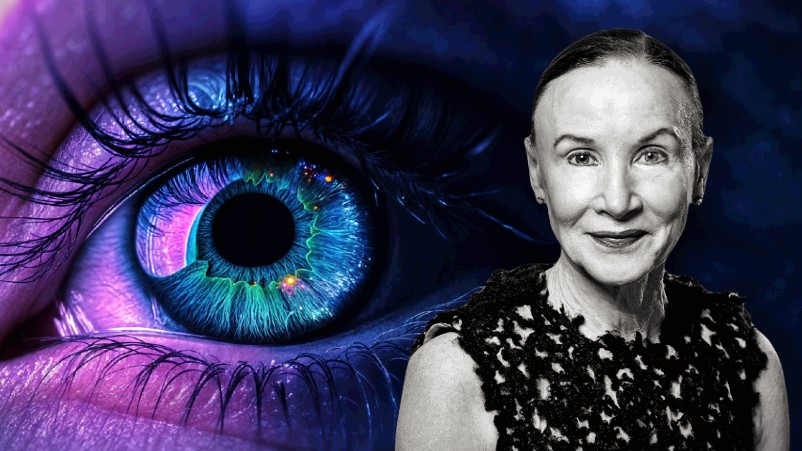Audiences are up, but ad dollars aren't yet moving – can the TV market turn the corner?

Nine and Seven have bucked linear TV audience declines with a glimmer of growth. Yet TV ad revenue keeps falling. Analysts suggest the money eventually follows the eyeballs, but networks have to manage that lag and hold audiences while market sentiment catches up. In the meantime "visibility remains short", per MST Marquee analyst Fraser McLeish. While BVOD's trajectory has slowed, "I think it’s got pretty strong growth still ahead – and you should be able to see it offset linear declines reasonably soon." He thinks the bump for linear TV audiences might be short-lived. But "as long as you get linear audiences declining more in the single digits, as BVOD audience continues to grow in the double digits, you can start to get to a point where you’re stable.” Network bosses are predicting a less bumpy second half.
What you need to know:
- Full fiscal year results for Australia's biggest TV networks suggest TV audiences are making a recovery, though revenues continue to lag.
- Nine's total TV audiences were up 3.6 per cent in the 12 months to June 30 2024, including a 1.1 per cent lift in linear, and 50.5 per cent leap for BVOD (9Now). For Seven, linear audiences were up 0.5 per cent, and BVOD minutes grew by 39 per cent.
- By comparison, Nine's total TV revenues fell 10 per cent to $1.13 bn, with EBITDA dropping 32 points to $208.3 million, while Seven's total TV revenues fell 6 per cent to $1.24 bn, with EBITDA down 35 per cent to $172 million.
- Telco and media analyst for equities research firm MST Marquee, Fraser McLeish, told Mi3 that it's too soon to say whether TV audiences have reached a turning point. While advertising dollars historically follow audience, he said TV revenues would ultimately be more dependent on the broader macroeconomic climate and return of marketing budgets to growth.
- Meanwhile, the networks are eyeing improvements to revenue in the back half of the 2025 fiscal year.
- McLeish said that's achievable if BVOD advertising continues to accelerate, even if linear audience declines return.
Follow the eyeballs?
TV's tough year surprises no-one, given the protracted soft ad market and the arrival of yet more competition amid a hardening of sentiment amongst advertisers who pulled few punches at the Future of TV conference back in March.
But lifting the hood, it would seem that sentiment is ahead of the audience – full fiscal year results from Nine and Seven have bucked TV’s downward eyeballs trend.
Nine reported a 3.6 per cent lift in total TV audience, driven largely by a 50.5 per cent growth in BVOD, though it managed to claw back 1.1 per cent in linear too. At Seven, total broadcast audiences ticked up by 0.5 points, with BVOD minutes up 39 per cent.
Those figures have the makings of a positive storyline against the background of slumping TV revenues, back 10 per cent at Nine and six per cent at Seven.
“Visibility remains short for TV advertising” and the TV market is “still weak”, he told Mi3. But given ad dollars have historically followed the eyeballs, “improving audience trends is very important to stabilising that decline in TV revenue”, per McLeish. The discrepancy in audience and ad dollars, for now, is fairly typical – “there is always a lag between audiences and revenue”.
But McLeish said any significant upturn will hinge on “more buoyant marketing conditions” and the return of healthy marketing budgets. If broadcasters can maintain audience growth, he would expect to see “improvement in those TV trends” when interest rates drop, confidence rises and the cycle turns.
Olympic efforts
Both Nine and Seven attributed falling TV revenues to a weak TV market in the 2024 fiscal year – free-to-air was down 12 per cent across the period, according to data from ThinkTV. But a slight moderation to a decline of 9 per cent in Q4 has TV bosses feeling optimistic.
In part, it’s down to gradual but persistent growth in BVOD. At least that’s true in Nine’s case – of the $1.13 bn in total TV revenue recorded by the business, $189.3 million came from 9Now. BVOD revenue was up 8 per cent from FY2023, partially offsetting the 12 per cent drop in linear revenues.
Nine’s chief sales officer, Michael Stephenson, told analysts that the second half of FY2024 had already seen the “flow on effect” of agency deals covering both BVOD and the Nine Network. With the opportunity of the Paris Olympics bolstering the underlying strength of audiences – and refreshing its log-in data – Stephenson said the value of those deals had increased, but since they were calendar year deals, a chunk of the upside will be seen in the first half of FY25.
There’s no comparison to be made between linear and BVOD performance for Seven. While it broke out BVOD within its FY23 results, the network opted not to do so in this year’s results.
Since taking the helm, CEO Jeff Howard has made sweeping changes in a bid to revive fortunes and take a bigger chunk of the digital dollars on the table. Hence rolling out a new company structure that will see the BVOD remit handed to the new leadership of Seven’s digital arm, helmed by chief digital officer Gereurd Roberts.
Per Howard: “Our new operating model establishes clear accountability for driving our own financial destiny. We will build a better and more resilient media business that captures the clear opportunity in digital and maximises the financial returns in our traditional businesses. The change in structure and leadership allows us to leverage skills across the business and to embed a performance culture."
The approach could see a potential streaming venture back on the table for the media company. Howard acknowledged to analysts there could be a potential last-mover streaming advantage, but it doesn't appear to be on the immediate horizon.
“I don’t think we’re more desperate or less desperate to get involved in that space…We’re not currently chasing it actively, but clearly subscriber-based revenue assets are something we think about.”
Nine's SVOD strategy appears to be bearing more fruit. Stan’s revenues were up 5 per cent to $447.7 million, with EBITDA climbing 24 points to $46 million.
Since the end of the financial year, the platform had gained another 100,000 new users on top of the 2.3 million reported paying subscribers, driven by Paris Olympics content. Since the end of the main Olympic event, Sneesby said Nine had so far been “pleased with the stickiness” of the new cohort.
Second half hopes
Between the two networks, the sentiment suggests that the second half of 2025 might be the turning point.
While ad sales remain sluggish in the short term – Seven says bookings are currently down 4-5 per cent across September and October, while Nine cites declines in the “low single digits” – the tide seems to be slowly turning.
Seven’s Howard told analysts that the moderation recorded in the market over the course of the year – the network’s total TV EBITDA was back 19 points in the second half, versus the 35 per cent drop it recorded over the year – seems to be continuing into the new fiscal period. “It feels like it’s moderating again,” he said.
Likewise, Nine's Stephenson sees some improvement in the second half.
“Whilst the market continues to be challenged – the ad markets are directly correlated to consumer confidence and the economic environment continues to be tough – we are starting to see, I would say, some marginal improvement … I’m confident that as we see this normalisation of audiences, that any decline in traditional audiences will be more than offset by live streaming and on demand audiences. Advertising revenue will follow that audience, and that gives us ongoing confidence about improvement into half two.”
“It’s really hard to see whether the lift in linear audiences is a kind of one off before we go back to declines. I suspect linear audiences are going to continue to decline, but maybe not at the high rate that we’ve seen over the last two or three years.”
“As long as you get linear audiences declining more in the single digits, as BVOD audience continues to grow in the double digits, you can start to get to a point where you’re stable.”
Paramount, News
Topline results for Nine Entertainment landed on Wednesday, with the TV, publishing and radio conglomerate’s revenues dipping 3 per cent to $2.6 bn in the 2024 fiscal year, despite audience growth in most segments. Profits took a harder hit, with net profit after tax (after minorities) down 28 points to $189.40 million.
Two weeks earlier Seven West Media posted a 5 per cent decline in fiscal year revenues to $1.415 bn. Profitability was an even greater issue for the Kerry Stokes-controlled media company, with $100 million falling out of the green for just $45 million in profits after tax (down 69 per cent).
Paramount-owned Network 10 escapes comparison – its US-based parent company doesn’t post ASX results for the Australian TV asset. The group’s global results for the six months to June 30 tracked against local media’s struggles, with revenues falling 3 per cent overall – including an 8 per cent decline in TV Media. Ahead of a slated merger with Skydance in 2025, the company’s declining linear TV assets (encompassing CBS, Nickelodeon, MTV, and international networks like 10) were offset somewhat by an 18 per cent lift in revenues for Paramount’s streaming and FAST TV businesses – the segment’s ad revenue was up 23 per cent thanks to growth in Paramount+ and PlutoTV.
Meanwhile, News Corp posted a more marginal 1 per cent fall in revenues to $1.917 bn for its subscription TV segment under the Foxtel Group, which is up for sale. Foxtel’s cable TV network shed circa 130,000 residential customers in the 12 months to June 30, offset by around 200,000 new paid subscribers across the Kayo and BINGE streaming products. Meanwhile, $51 million in costs primarily associated with the Hubbl launch, increasing contractual increases in sports rights, and negative foreign currency fluctuations influenced an 11 per cent decline to segment EBITDA, to $310 million.


